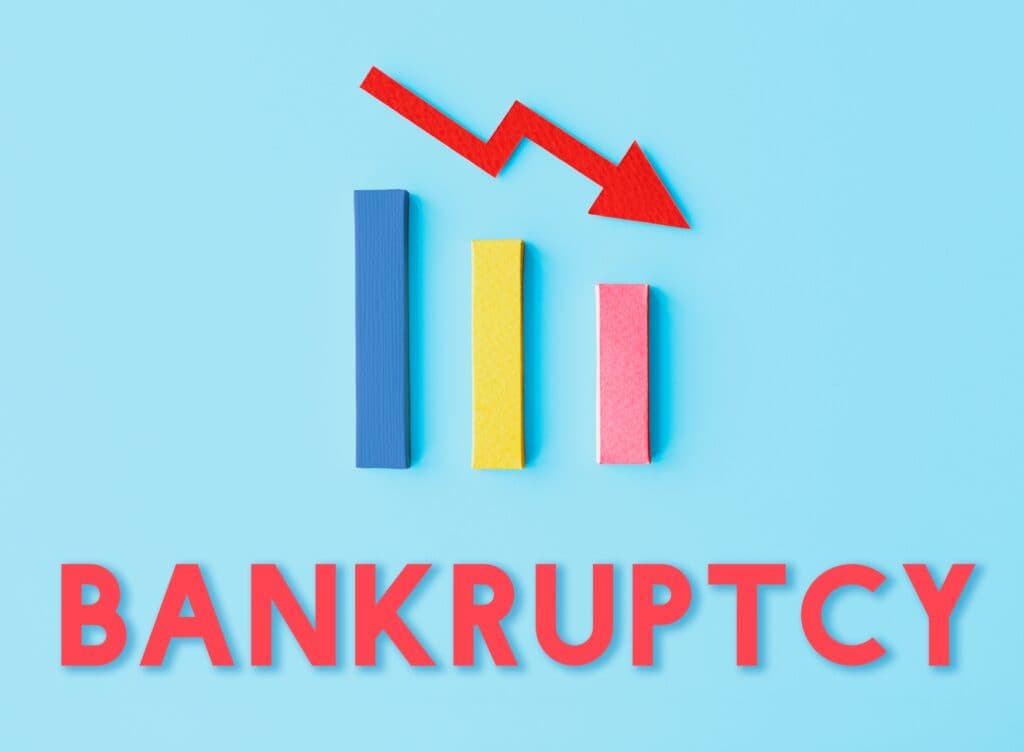Have you ever thought, “Can a real estate company that owns buildings and collects rent go bankrupt?”
It might sound unlikely, but yes—REITs can and do fail. Whether it’s due to too much debt, mismanaged properties, or sudden market crashes, even large REITs have gone under. But by studying real cases of bankruptcy, we can learn how to spot the warning signs early and avoid falling into the same traps.
Introduction: When Real Estate Isn’t Enough
Real Estate Investment Trusts (REITs) are often seen as safe investments. They own physical properties, earn rental income, and pay regular dividends to investors. In many Arab markets such as Saudi Arabia, UAE, and Egypt, REITs are growing in popularity as more investors seek passive income and exposure to real estate.
However, despite their structure and legal protections, REITs are not immune to failure. When market conditions shift or management makes poor decisions, even a portfolio full of buildings can’t save a company from collapse.
Over the past few decades, several REITs have filed for bankruptcy—particularly during financial crises or periods of sector-specific stress. Understanding these cases can help us identify the red flags early and make better investment choices.
What Causes a REIT to Go Bankrupt? 
REIT bankruptcy usually results from a mix of poor financial management, market downturns, and operational missteps. Common causes include:
- Excessive use of debt to grow the portfolio
- Declining occupancy rates and rental income
- Dependence on a single sector or tenant base
- Poor liquidity during financial crises
- Failure to refinance maturing loans
- Weak leadership or lack of transparency
In each case, the signs were often visible long before the final collapse—but many investors ignored or misunderstood them.
Let’s explore several notable examples and what we can learn from them.
Case Study 1: General Growth Properties (GGP) – A Cautionary Tale from the 2008 Crisis
General Growth Properties was once the second-largest mall operator in the United States. With more than 200 shopping centers across the country, GGP seemed untouchable. But during the global financial crisis of 2008, the company filed for Chapter 11 bankruptcy protection.
So, what went wrong?
The company had aggressively financed its growth with short-term debt. When credit markets froze in 2008, GGP found itself unable to refinance over $15 billion in maturing loans. Its cash flow, which depended on retail tenants, also began to shrink as consumer spending dropped.
Although its properties still had value, the timing of the debt maturity and the sudden lack of liquidity forced the company into bankruptcy.
Lesson learned: Even large REITs can fall when debt is poorly managed. A strong real estate portfolio doesn’t protect a company if it can’t access liquidity in a crisis.
Case Study 2: JER Investors Trust – Misreading the Market
JER Investors Trust was a mortgage REIT that specialized in commercial real estate debt. Unlike equity REITs that own physical buildings, mortgage REITs earn income by lending to property owners or buying mortgage-backed securities.
During the mid-2000s, JER expanded quickly into high-risk commercial mortgage investments. When the financial crisis hit, many of those loans went bad. The trust’s income collapsed, and it couldn’t meet its financial obligations.
Eventually, the company was delisted and dissolved.
Lesson learned: Mortgage REITs carry different risks from equity REITs. Investing in debt during a boom might seem smart—but if the borrowers can’t pay during a downturn, the REIT collapses quickly.
Case Study 3: Ashford Hospitality Trust – The Impact of COVID-19
Ashford Hospitality Trust is a hotel-focused REIT that faced significant challenges during the COVID-19 pandemic. The company owned over 100 hotels in the U.S., relying heavily on travel and tourism.
When global travel restrictions hit in 2020, hotel occupancy rates plummeted. Ashford’s revenue dropped sharply, and it struggled to cover operating costs and interest payments. In mid-2020, the REIT entered restructuring negotiations, suspended dividends, and warned investors about the risk of bankruptcy.
Though it avoided full bankruptcy through asset sales and debt restructuring, the damage to shareholders was substantial.
Lesson learned: Sector-specific REITs can be highly vulnerable to unexpected market shifts. Overdependence on travel or retail, for example, can quickly turn into a crisis during global events like pandemics.
Case Study 4: Pennsylvania REIT (PREIT) – Structural Decline in Retail
PREIT focused heavily on mid-tier shopping malls in the northeastern U.S. For years, it struggled with tenant closures, rising vacancies, and shifting consumer habits toward online shopping.
While other REITs diversified into mixed-use developments or logistics properties, PREIT remained highly exposed to physical retail. In 2020, the company filed for Chapter 11 bankruptcy protection, citing $1 billion in debt and ongoing cash flow issues.
PREIT later exited bankruptcy after restructuring its debt, but investor losses remained high, and confidence in the company eroded.
Lesson learned: Failing to adapt to long-term market trends—like the growth of e-commerce—can leave REITs behind. Diversification is essential for long-term survival.
Common Themes Across Bankruptcy Cases
While each REIT bankruptcy is different, several recurring themes appear in almost every case:
Overleveraging
Many REITs used too much debt to fund expansion. When revenues dropped or credit markets tightened, they had no buffer to survive.
Concentration Risk
REITs heavily focused on one asset class or tenant type (like hotels, malls, or offices) were hit hardest during sector-specific downturns.
Lack of Liquidity Planning
REITs often assumed they could roll over their loans. When banks pulled back lending during crises, these companies were caught unprepared.
Poor Management Response
In many cases, management either failed to act quickly or hid the severity of the problems from investors until it was too late.
Delayed Dividends and Investor Panic
Dividend cuts often triggered stock sell-offs, worsening liquidity problems. When REITs rely on investor trust, sudden changes in policy can accelerate collapse.
Implications for Investors in Arab REIT Markets
As REIT markets grow in the Arab world, investors should approach distressed or high-yield REITs with caution. While local economies may offer strong real estate growth, the risks remain similar.
Many Arab REITs are still new and lack long operating histories. Some may be tied closely to a single development project or sector, such as hospitality in Mecca or office space in Dubai. These REITs may offer high initial dividends but could also be exposed to concentrated risks.
Transparency is another concern. In mature markets, REITs are required to publish detailed financials and investor presentations. In newer markets, disclosure may still be limited, making it harder to evaluate real risks.
Governments and regulators in countries like Saudi Arabia (CMA) and the UAE (SCA) are actively working to raise standards, but investors must do their due diligence. Lessons from past bankruptcies can serve as valuable guidance.
Red Flags to Watch for Before a REIT Fails
While bankruptcy is the final stage, warning signs usually appear long before. You can protect yourself by watching for:
- Declining or suspending dividends without clear reasoning
- Steady increases in debt without matching growth in income
- Loss of major tenants or rising vacancy rates
- Heavy exposure to one sector without diversification
- Management silence, vague communication, or resignation of key executives
- Repeated delays in financial reporting or restructuring announcements
- Sudden asset sales at discounted prices just to raise cash
If you spot more than one of these signs, it’s time to investigate further or consider exiting the investment.
What Can You Do as an Investor?
Being informed is your best defense. Here are a few practical steps you can take to avoid getting caught in a failing REIT:
- Analyze Financials Closely: Focus on cash flow, debt maturity schedules, and how dividend payouts compare to net income or FFO (Funds from Operations).
- Understand the Business Model: Know whether the REIT is equity- or mortgage-based, sector-specific or diversified, and how it generates value.
- Monitor Industry Trends: Stay updated on the REIT’s sector performance—such as hospitality, logistics, or retail—especially during economic shifts.
- Track Management Behavior: Look for transparency, regular reporting, and clear strategies. If leadership seems evasive or reactive, be cautious.
- Stay Ahead of Market Panic: Share prices often fall long before bankruptcy announcements. If you see consistent negative trends and no clear turnaround plan, don’t wait too long to act.
Conclusion: Bankruptcy Isn’t Sudden—It’s Predictable
Most REIT bankruptcies don’t come out of nowhere. The signs are usually there—rising debt, falling revenue, panicked asset sales, or missing dividends. The problem is that many investors ignore them until it’s too late.
By studying past failures, especially from global markets, investors in the Arab world can protect themselves from similar outcomes. Whether you’re investing in a REIT in Dubai, Riyadh, or Cairo, the same principles apply: be cautious, ask questions, and don’t rely on past performance alone.
Bankruptcy may seem like a distant risk, but as history has shown, even the biggest REITs can fall. What matters is whether you’re paying attention to the signals—and learning from the past.










